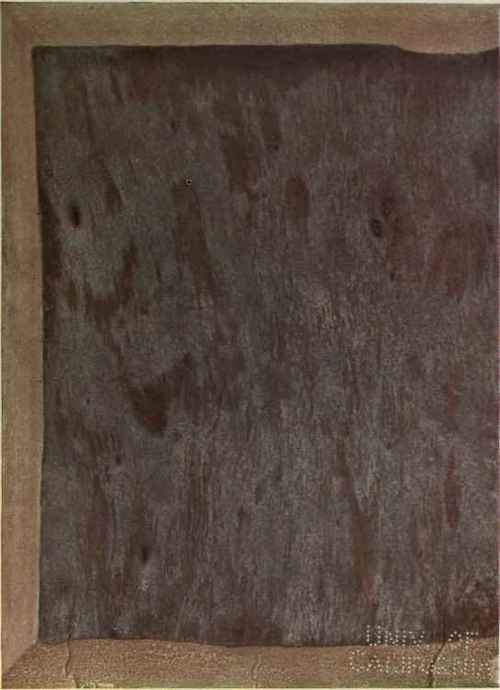11. Eucalyptus saligna
Description
This section is from the book "A Research On The Eucalypts Especially In Regard To Their Essential Oils", by Richard T. Baker, Henry G. Smith. Also available from Amazon: A Research On The Eucalypts And Their Essential Oils.
11. Eucalyptus saligna
(Sm., in Trans. Linn. Soc, iii, 285-partly). Sydney Blue Gum.
Systematic. - A tall tree, growing to its greatest height and perfection in the gullies of the coast. Bark either smooth, bluish-white with a silvery sheen, or rough at the base, similar to that of E. robusta. Abnormal leaves alternate, lanceolate. Normal leaves lanceolate, occasionally falcate, drying a bluish-green, pale on the underside; intramarginal vein close to the edge; transverse veins numerous, fine and parallel (slightly oblique). Peduncles axillary, with few, mostly five to seven flowers, either on a slender pedicel or almost sessile; calyx turbinate or conical; operculum hemispherical, shortly acuminate.
Fruit. - Mostly more hemispherical than shown in the plate, pedicellate or sessile; rim thin ; valves slender, expanded, sharp-pointed, and well exserted; 3 lines long, 2 1/2 lines in diameter.
The valves inserted just below the rim is a good specific feature by which to determine the fruits.
Habitat. - Mostly in, or at, the head of gullies in the Coastal districts of New South Wales.

Plate XVI.

A Typical Gum Bark
Eucalyptus saligna, Sm
The largest group of all, having a smooth, pinkish, yellowish tint, or whitish bark, powdery on the outside.
The principal constituent in oils of most species having barks of this character is cineol, the terpene being pinene. This is so with those of E. globulus, E. goniocalyx, etc. On the other hand some " Gums " also yield phellandrene oils in which little cineol occurs as for instance E. oreades, E. coriaceee, etc. A greater variety of oils is thus found in this division than obtains in any of the others.
ESSENTIAL OIL - Leaves and terminal branchlets for distillation were obtained from Gosford, N.S.W., in August, 1897. The yield of oil was 0.22 per cent. The crude oil was dark red in colour, caused by the excess of acid attacking the iron of the still, and the action of the phenols on the iron thus removed. The oil was quite limpid, and consisted largely of pinene and cymene, together with the sesquiterpene and esters. Cineol was present only in traces, and phellandrene was absent. The oil had quite an unpleasant odour, probably due to the valeric acid present.
It will be observed that with the variety pallidivalvis the oil contains an excess of dextro-rotatory pinene, and consequently the cymene was less in amount, but the high saponification number and high acid value are similar with both oils, while the constitution of the esters is similar also.
The crude oil of E. saligna had specific gravity at 150 C. = 0.8731; rotation aD + 1.1°; refractive index at 200 = 1.4789, and was soluble in 10 volumes 80 per cent. alcohol. The saponification number for the esters and free acid was 26.2.
On rectification 2 per cent. distilled below 1700 C. (corr.). Between 170-1800, 75 per cent. distilled; between 180-2400, 16 per cent. came over; and between 240-2550, 3 per cent. distilled. The latter fractions were quite acid. The third fraction consisted largely of the sesquiterpene. The results with the two first fractions were :-
First fraction, sp. gr. at 150 C. | = | 0.8635; | rotation aD | + | 2.3° | |||
Second | ,, | ,, | ,, | = | 0.8679; | ,, | + | 0.6°. |
The cineol did not exceed 5 per cent. in the first fraction. | ||||||||
In October, 1919, material for distillation was obtained near Sydney. The yield of oil was very small, 0.015 Per cent. The crude oil was limpid, and quite similar in composition to that originally obtained in 1897 from material growing at Gosford. The crude oil had specific gravity at 150 C. = 0.8846; rotation not determined; refractive index at 200 = 1.4795, and was soluble in 10 volumes 80 per cent. alcohol. The saponification number for the esters and free acid was 35.5; after acetylation the saponification number was 57, equal to 6 per cent. of free alcohol with the C10Hl8O molecule.
On rectification, 61.5 per cent. distilled between 167-1820 C. It had sp. gr. at 15° = 0.865; rotation aD + 8.30, refractive index at 200 = 1.4767.
This fraction was again distilled, when 50 per cent. came over between 160-165° C, it had rotation aD + 11.0°, and refractive index at 200 = 1.4724.
The portion boiling above 1650 had rotation aD + 4.8°, and refractive index at 200 = 1.4797. It had a strong cymene odour, and as this hydrocarbon has been determined chemically for this group of oils, there appears little doubt but that it was present with the pinene in the oil of this species also.
Continue to:


